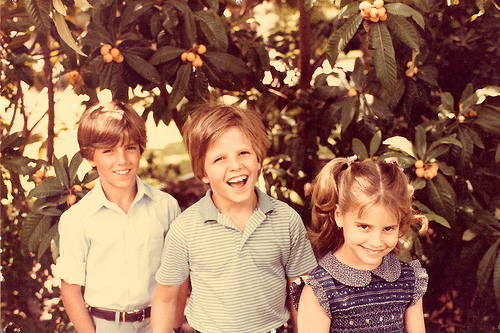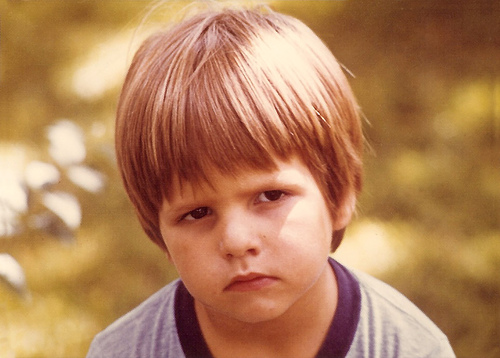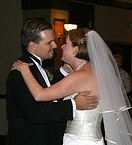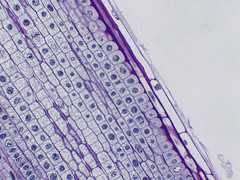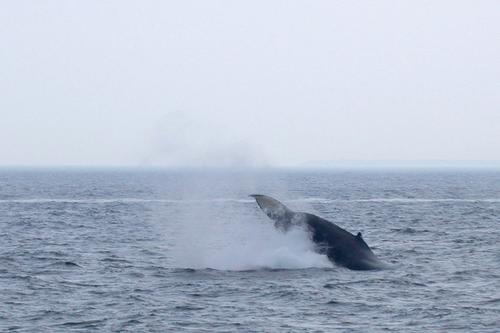Paging through a few themes in the newly-online Life photo archives this morning, I came across what has to be one of my favorite parenting photos ever…
This is, by far, the best photo sequence I’ve yet seen demonstrating that Michael Phelps did manage to out-touch Milorad Cavic in last night’s unbelievable 100 butterfly final. I mean, you get a great sense that Phelps did the unthinkable from the in-pool and high-speed overhead cameras (note that I’m sure those videos will disappear from YouTube at some point soon), but these photos are pretty awesome.
What a great year this has been for Olympics swimming.
I am incredibly excited about the launch of Flickr’s new video uploading abilities — what a welcome addition to an already-awesome online service! (I also love Heather Champ’s silly little intro video to the service… nice work, that.) With the new kiddo at home, we find that we’re taking a slew of both pictures and videos; we’ve shared all the photos with our people via Flickr, but have had to do a bit of custom work to get the videos online in a way that let us exercise a bit of control over who could see and reuse them. No longer!
For everyone who seems confused about what I used to do for Sports Illustrated, Microsoft put together a series of two great articles (first, second) that show exactly what I did every time I went on the road with the magazine. (Well, I worked there before the photo world went entirely digital, so imagine a bunch of film processors, slide mounters, light tables, and high-resolution film scanners added to the mix, along with the ever-present smell of the chemicals used to develop the film!) Our road setup was amazing for the time — we travelled with around 150 custom-built padded cases, one- or two-dozen computers and 17-inch monitors, huge (and incredibly delicate) flatbed scanners, a truckload of networking equipment, and countless cases full of cables, power adapters, keyboards, mice, printers, slide carriers, and other assorted loose equipment. It took nearly a day just to unload the equipment, much less set it up — and another day to break it all down and pack it up for shipment back home. We always brought special connectivity lines into the event venues, and spent days and days trying to convince telcos that adhering to their normal troubleshooting procedures would mean that they’d show up to fix some problem long after an event ended and we’d returned home. The most amazing part of it was how magical it felt to most of the editing staff when the images appeared on their desktops back in NYC within an hour or two of them being shot in some arena on the other side of the country… this was way back before everyone took the internet for granted. In any event, I’m super-impressed with the detail that MS put into these two articles. (Thanks go out to Sam for the pointer.)
Scott LaFee wrote up a great little history of the petri dish in the San Diego Union-Tribune — it’s a fascinating piece about a piece of scientific equipment that’s so important and pervasive that pretty much every lay person out there knows its name and function. And in addition to the simple dish’s role driving science forward a million different times a day, it’s also been the palette for some pretty cool art, some mathematical theories about fractal development, and even the appearance of a major diety; there are literally a million derivatives of the petri dish, from three-dimensional ones to ones that fit on the head of a pin. Very cool indeed, especially given that it’s an invention by a scientist whose career was otherwise unremarkable.
(One note: while doing a few searches to write this post, I stumbled across this Flickr posting of a petri dish, and immediately recognized it as stolen from this scientist’s online gallery of his own petri dishes. The part of it that I find the most galling is that the Flickr user, Jack Mottram, assigned a Creative Commons license to the photo that demands that others attribute any reuse of the image back to him, as if he has any rights to the photo to begin with. That’s severely broken.) Update: he appears to have added a credit for the photo and removed the CC license… but I’d argue that it’s still not kosher to have the image in his Flickr photostream at all.
In a shocking, shocking bit of news, the New York Times has an article talking about how better real estate listing photos help sell homes. From the buyer’s perspective, I can back this up about one kajillion percent; Shannon and I spent countless hours of our homebuying experience hysterically laughing at the godawful pictures that people were willing to attach to their half-million-dollar home listings. What’s sad to me is that most of the time, it appears that it’s the agents themselves who are taking and publishing the horrid pictures — I’m pretty sure that when the day comes that Shannon and I find ourselves in the market to sell our house, one thing we’ll be doing is looking at any prospective agents’ other listings and seeing how good (or awful!) the images are.
It’s fascinating to me that this Sports Illustrated gallery of the magazine’s “favorite Muhammad Ali fight photos” doesn’t include what is perhaps the most famous Ali fight photo ever, a photo shot by Neil Leifer that was considered so amazing it appeared on the cover of the SI double-issue carrying the headline “The Century’s Greatest Sports Photos”. I’m assuming that the prominent “license photos at SIPictures.com” link below each of the photos is a big part of the explanation; although has SI printed the photo a few times over the past 40 years, the magazine doesn’t own the rights to the picture. (Neil Leifer himself still owns the rights, and has told his story about being in the right place in the right time a few times.)
So, I guess the photo gallery might more appropriately be entitled, “SI’s favorite Muhammad Ali fight photos for which we can sell you a license”. Don’t get me wrong, there are still some amazing shots in there, but it’s like a list of best steakhouses that doesn’t have Peter Luger on it, or a list of worst movies that doesn’t have “Random Hearts” on it.
Shannon and I spent the day today running around Washington, DC, supporting a friend of ours in his 10th running of the Marine Corps Marathon. It was a beautiful day to be trekking around the monuments, and a great excuse to find ourselves at the foot of pretty much every notable monument in the District.
I put a bunch more pics up on Flickr, including another handful from the World War II Memorial.
This is really, really cool: a telescope photo of the Space Shuttle Atlantis taken 50 minutes after it separated from the International Space Station… while crossing in front of the sun. It was taken four days ago from Normandie, France by Thierry Legault, shot at one eight-thousandth of a second using a Canon 5D. He shot three images a second over the span of five seconds, and managed to capture the orbital ballet perfectly.
Now seriously, I can’t think what would possibly motivate the New York Times to digitally alter this photo (archived here by the good folks at Boing Boing in case the Times takes it down). What’s gained by removing the rest of the microphone cable? Is it some top-secret composite cable that gives our American strippers a strategic advantage? (And possibly of more importance: can’t the Times hire people that know how to use Photoshop better than your average five year-old? That’s the worst pixel pushing I’ve seen in a very long time.)
Update: enough people have pointed me to this now that I’m willing to concede that this might not be a Photoshop job… but it’s still odd to me. Having worked as a photo editor (both the analog and digital variety), I don’t know that I’ve ever seen an artifact of slow shutter speed that has borders quite that sharp, but who knows. In any event, did Wilson really not have any images from the cheesecake event that didn’t require explanation?
Now seems as good a time as any to dump a few links here that have accumulated in tabs in my browser over yesterday and today:
- Michael Bronner has a fantastic article over at Vanity Fair’s website that uses the recordings of NORAD’s efforts the morning of 9/11 to paint the picture of just how unprepared our country was to deal with the attacks, and how chaotic the information flow was as it reached from the trenches up to those invested in protecting the airspace of the East coast. I guess it doesn’t surprise me how difficult it was for the commander of the Northeast Air Defense Sector to get reliable information that morning, but it’s astounding nonetheless, and in all honesty it serves as a potent argument for the creation of the Department of Homeland Security, and the establishment of clear and decisive plans for dealing with crises on the scale of 9/11.
- Pamela Colloff has an equally fantastic article in the latest Texas Monthly about Charles Whitman’s massacre from the top of the University of Texas Tower 40 years ago yesterday, an article that’s almost entirely told through the first-person words of people who were in the thick of it. It’s a very moving piece, and gives a voice to how shocking the event was at the time, and how different the immediate police response was in 1966 than it’d be in 2006. (via MetaFilter, which has a bunch more links to related info)
- Dahlia Lithwick took a look this past weekend at privacy rights in the age of weblogs, using the affair between Robert Steinbuch and Jessica Cutler (the skanky ex-Capitol Hill assistant who was once better-known as Washingtonienne) as her focal point. I’m not sure if this is the first time, but I found myself disagreeing with Lithwick’s final point, that Cutler’s exposition of the affair on her weblog might have violated Steinbuch’s privacy. It seems to me that a person has every right (absent a specific contract to the contrary) to talk about that which is going on in his or her own life; it’s not like Cutler was passing on a rumor of someone else’s affair, she was talking about her own sexcapades.
- In August of 1958, young and new-to-the-business photographer Art Kane was tasked by Esquire Magazine with taking a photo to illustrate an article about jazz. He wasn’t entirely sure how best to approach the assignment, so he started out by doing something I’m sure he felt would be a failure: he contacted as many major New York City jazz musicians as he could, and asked if they would meet on 126th Street at 10 o’clock in the morning. Much to his surprise, 57 of them showed up, leading to one of the most amazing photos I’ve ever seen. My favorite bit of the photo is the lower right corner, in which Dizzy Gillespie’s goofing off caused Roy Eldridge to turn around just as the image was captured. (via kottke)
For a good read, and a lesson in humility and respect to boot, check out this awesome post by Michael Bierut about calling Arnold Newman one day without having the slightest idea of who he was.
After all my work at the various bureaus of the DC municipal government was done yesterday, I figured the weather was nice enough for me to walk back to our new house, and made a point of including the Capitol on my path. Every time I wander our new neighborhood, the enormous dome is just there, at the end of all the major streets, helping me orient myself.
Check out this very clever set of Flickr favorites; it’s one of those “I wish I had thought of that first!” kinds of things.
Congrats to Catarina and Stewart for being named to Time’s 100 People Who Shape Our World list — they share company with the likes of Stephen Colbert, Nancy Cox, the Pope, Angela Merkel, Elie Wiesel, and Al Gore. (Since the list is technically made up of 100 entries rather than 100 people, I guess both Catarina and Stewart have been reduced to half-people — but then again, so have our 41st and 42nd Presidents, and Bill Gates too!)
After excitement turned to disappointment earlier, I decided to do a little bit of investigation with Verizon Wireless as to why Shannon and my RAZR phones will occasionally take pictures that are too large to send as picture messages or email attachments. And after a little bit of on-hold time, I’ve now had confirmed for me that there’s nothing that can be done about it, and that Verizon has no intention of making the decision that can actually fix the root problem. But first, let’s take a step back for a minute, and start from the beginning so as to better understand what’s going on.
Like all other digital cameras, there’s been major pressure on the manufacturers of camera phones to increase the quality and resolution of the cameras that are built into the devices. As a result, while we once had crappy, poorly-lit 320 by 240 images coming out of the phones, manufacturers quickly moved to VGA-caliber cameras (640 by 480), and then beyond, to megapixel-size images. (Hell, Samsung displayed a fairly ridiculous seven-megapixel camera phone last year.) So it’s fair to say that the cameras in phones sold by mobile phone carriers are getting better, and that the size of the image files that are being generated by these phones is steadily increasing as a result.
Now, like any other digital camera, the users of camera phones would ideally like to get those photos off of the camera. For one reason, the displays on most phones aren’t anywhere near the resolution of the cameras, and that means that in order to enjoy the higher resolution of the images, they need to be displayed on something other than the tiny display of the phone. (After all, it was just this past February that the first phone offering a 640 by 480 display was introduced — a phone which offers a camera that takes pictures at 16 times that resolution.) For another reason, people want to share their photos, and a photo which is trapped in the memory of a camera phone is the antithesis of a shared photo. Logically, camera phone manufacturers and wireless phone providers have thus given their users a variety of methods to get the photos off of the phone, methods which include sending them via some communications method like MMS or email, or allowing you to connect the camera phone directly to your computer via a cable or Bluetooth. In our story, here’s where the idiocy begins to creep into the mix.
Verizon Wireless sells camera phones to its customers, and also offers a service named Get it Now through which customers can download photos, ringtones, games, and whatnot to their phones. Most of Get it Now is a pay service; to download a single new wallpaper or ringtone to your phone, you pay somewhere between $2 and $7 to Verizon. Because of this, the company has opted to disable any method of directly connecting some of its phones to computers — such a connection would enable users to put their own images or ringtones onto the phone for free, something which would compete with Verizon’s pay service. In our case, the Verizon RAZR V3C has specifically been crippled, loaded with firmware which disables the Bluetooth protocol that would allow me to share files between the phone and my computer. For the most part, I couldn’t care less — I’m not someone who’s itching to create new ringtones and put them onto my phone. Alas, though, there’s a specific instance in which it becomes much more important to me that Verizon has decided to sell a crippled product.
As I mentioned above, the cameras in phones have been getting better, and with a 1.3 megapixel camera, the RAZR V3C is a testament to this. If you get a good sense of its optimal light conditions, the phone takes reasonable photos, and it’s usually not a problem for me to send them along to my Flickr account or via email to a friend or two. But on occasion (twice in the past 18 photos I’ve taken), the resulting photo file size will be larger than 300 Kb, which turns out to be the limit on Verizon’s network for sending or receiving multimedia files… and in these cases, because Verizon has opted to disable the phone’s ability to connect to computers and exchange files, there’s absolutely no way to get the photo off of the phone. (On the RAZR, you get an instant little dialog box that says “ATTACHMENT TOO BIG”, and that’s the end of that.) So, in the company’s quest to lock users into its own pay service for multimedia downloads, Verizon has created a case wherein there’s no way to upload certain images, images that are created via the ordinary use of the phone’s own camera.
So, I made a few phone calls this afternoon in an effort to see what could be done about all this. I spoke with a customer service woman at Verizon Wireless whose first response was to recommend that I stop taking pictures at the highest-resolution setting on the phone; she didn’t quite get why I wasn’t satisfied with that as an answer. She then promised to look into it and follow up with me, and an hour later called me back to place the blame squarely on Motorola (the makers of the RAZR V3C phone). One phone call to Motorola’s dedicated V3C support line (800-657-8909, for those who want that number) verified that the problem was Verizon’s own limit of 300 Kb on MMS and email attachments — and led to the Motorola tech expressing extreme exasperation that his company was willing to put its products in the hands of customers via a middleman (Verizon) who crippled those products before passing them on. My final call was back to Verizon, wherein a technical support agent verified the 300 Kb limit, and also verified that Verizon has no intention of opening up the Bluetooth file transfer protocols anytime soon. (He specifically made reference to the various internet discussion group threads surrounding the current firmware upgrade, and said that it does not give OBEX back to phones which have had it disabled.) He was sympathetic to the fact that I had photos on my phone that could not be sent anywhere but to the trash can, and promised me that he would submit my complaints via a “Voice of the Customer” process that’s internal to the support division of Verizon Wireless.
I guess this just highlights to me the reality of decisions that are made outside of their relevant contexts. Verizon Wireless chose to provide a revenue-generating multimedia download service, and then opted to protect that revenue generation by modifying the capabilities of its phones. In so doing, its methods of limiting the phones’ abilities has led to loss of functionality outside the scope of the multimedia download service — and made it impossible to work around that loss of functionality. And as an end-user of one of the affected phones, I now have to make choices that just don’t make any sense, like whether I want to take high-resolution photos that might not be usable on the Verizon network, or will settle for taking low-resolution photos that are able to be sent by my phone but look crappy as all hell. It’s just plain dumb.
Praise be to the gods of mobile telecommunications gadgets: Verizon has now released a firmware for their Motorola RAZR V3C phones that re-enables OBEX. (For those who aren’t hip to the lingo of Bluetooth, OBEX is the communications protocol that enables you to transfer binary objects — think pictures, ringtones, etc. — from your computer to your phone and vice versa.) You’ll have to go to an actual Verizon storefront to get the new firmware uploaded onto your phone, but the apparent additional improvement of the user interface speed will likely make the trip worth it a dozen times over.
In the original version of the firmware for the RAZR, Verizon “accidentally” left it enabled, meaning that customers could get their pictures off their phone and get ringtones onto their phones without having to use Verizon’s own pay-per-transfer service. A firmware update four to six months ago disabled OBEX, and those who cared were pretty upset; it’s good to see that Verizon has agreed to return the functionality to its RAZRs. The funny thing is that Shannon and I have recently realized that this is actually more important than it might seem — both of our phones have taken pictures in the past month that are then deemed too large to attach to an outgoing picture message, meaning that they’re completely trapped in the memory of the phone. Now, we’ll be able to free the pictures from their tiny jails, and use them however we want!
Update: well, maybe nevermind this. It looks like Verizon isn’t being as accommodating as was first thought to be the case — apparently, most people won’t get OBEX back on their RAZR phones. (It’s only people who had an older version of the firmware, the one with OBEX enabled to begin with, who are seeing it present in the latest update; everyone else is reporting the same crippled behavior.) The folks over at Howard Forums are still trying to get to the bottom of the issue, but for now, I’m not sure that anything’s different (except for the improved speed in the interface).
OK, this is cool: a two-minute, stop-motion video of the conversion of the American Airline Center from its hockey configuration to its basketball configuration (a process that only takes two hours!).
As Shannon and I blew through New York City two days after Christmas, my folks passed along another few batches of old photos that they had culled out of their huge collection. I’ve decided to try to scan a bunch of them for safekeeping, and had to start with this one — to me, it’s a great window into the individuality of me and my siblings. That’s Noah, on the left, looking pretty well-put-together (hair brushed, sleeves carefully rolled up, looking suave with his hands in his pockets), and Rachel on the right looking coy and mischevious. And of course, I’m in the middle, a little more dressed-down, hair wild, and goofing off as usual. Really, it’s perfect.
Today, in Sioux Falls, South Dakota, an attempt to demolish a 20-story building failed to topple the structure, instead causing it to sink into its own basement. (A QuickTime movie of the whole thing is here.) The building, the Zip Feed Mill Tower, is thought to be the tallest in all of South Dakota; a weblogger, Hoby Brenner, has already posted to Flickr a bunch of pictures of the now-tilting structure. It’s a bit frightening that a building that tall can tilt that much without just crumbling to the ground!
Shannon and I spent a huge chunk of this afternoon cleaning up our house, and I found a cache of pictures my grandmother sent along to me from her collection. The one above is one of them, and I really like it! I’m not sure why I like it so much, though — maybe it’s the total bowl-cut, or the ringer-T (of which I still own about a dozen!), or the brooding look I’ve got going on. In any event, there I am at the tender age of three, about fifteen years from figuring out that that hairstyle wasn’t gonna cut it.
Digital photography maven Rob Galbraith has written a good quasi-review for Aperture, the professional photo workflow app announced by Apple early last month. I’ve been reading a ton about Aperture over the past few weeks, both because of the weblog world’s jittery excitement about the product (as is usually the case with anything manufactured or authored by Apple) and because I’m becoming more and more frustrated with the shortcomings of Apple’s consumer-level entry in the arena, iPhoto. Aperture looks like, in some respects, it’ll be the Real Deal — version control for any photo imported into its library, internal handling of each camera’s RAW files, management of embedded caption information, reasonable color management, and a workflow which acknowledges that many people will continue to use external photo editing apps (e.g., Photoshop) to work on files that are managed by Aperture. I agree with a few of the downsides mentioned by Galbraith, though, like that Aperture doesn’t have the ability to manage photos that aren’t on a currently-accessible disc and that it’s reasonably clear you’ll need a pretty fast, dual-processor Mac (with a huge hard disk!) to take advantage of Aperture in the first place. Looking at how far iTunes and iPhoto have come from their version 1.0 days, though, I’m still excited to see with Aperture 1.0 (if I can corral a Mac that’s up to spec) and put it through its paces a bit.
The third set of pictures is up, these from our honeymoon time in Granada, Spain. After our stay on the Costa del Sol, we drove up to Granada and (in the one splurge we took on the trip) stayed in the Parador, the hotel that’s actually inside the Alhambra. It was only fitting — we actually ended up spending the bulk of our three days in Granada within the walls of the Alhambra, exploring the Nazrid Palaces (by day and by night!), the Alcazaba, and the Generalife gardens. And where Ronda introduced us to Moorish Spain, Granada hit us full-force with it! (The pictures aren’t all captioned yet, but will be in the next day or two.)
The second set of pictures is now up — these from the first leg of our honeymoon in the Andalucia province of Spain. We flew into Malaga, one of the larger towns on the Costa del Sol (the Mediterranean coast of Spain), and because we wanted to enforce a little bit of relaxation at the start of the trip, we stayed in a resort in the smaller coastal town of Estepona. On the third day there, we took a day trip to the town of Ronda (one of the pueblas blancas, or white villages, and home of modern bullfighting) and got a great introduction to the Moorish heritage of most of southern Spain.
Next up: our trip from the Costa del Sol to Granada, and our stay within the Alhambra!
On the perfect day for it, Flickr announces photo printing services! This makes me an awesomely happy Flickr user. Right now, the services appears to be limited to people who live in the United States, and allow you to have prints mailed to you or have them printed to any Target store (another hoo-rah from me!). You’ll also have to set your printing preferences before the “Order Prints” button will show up above photos, and everyone’s default is to only allow themselves to print the photos they’ve uploaded unless they specify otherwise. (I’ve set my photos so that anyone in my contact list can print them.)
Thanks, Flickr people!
I’ve posted the first bunch of pictures from our wedding, nearly all of which graciously taken by a friend of ours, Jill, using our new digital camera. (OK, two were rudely stolen from Anil and Alaina, but since one is of the two of them looking damn good, I figured they wouldn’t mind too terribly much.) It was great that Jill wanted to take pictures for us, since that meant that we were able to upload them to my laptop and see them while on our flight to Spain — it sure beats waiting for the official pictures! That being said, we are supposed to have all the official digital photos from our photographers within the next week, something that makes us very excited.
The next pix I expect to put up will be from the first leg of our honeymoon, along the Costa del Sol in Spain. Keep an eye out for it in the next few days!
The satellite images of a post-Katrina Gulf coast are starting to roll in; so far, the USGS LandSat image has the best view of the amount of land saturated by water. (For a good previous comparison, go to the USGS Global Visualization Viewer for New Orleans (requires Java!), and take a look at the 240-meter resolution images for December 2002 or January 2003.) I suspect we’ll be seeing some higher-resolution images from GlobeXplorer and Space Imaging in the next few days, and of course, there are plenty of images from the ground that reinforce how immense the damage is.
It looks like the time is (finally) just around the corner when I’ll be able to order photo prints from Flickr! (I don’t think I’m going too far out on a limb saying that this photo provides the not-so-subtle hint Qoop will be providing the printing services.) I love Flickr to death, and am generally unfazed by downloading high-res versions of pictures I like and printing them on our home inkjet. But the lack of a click-print-and-ship service has been the one thing that’s stood in the way of me converting friends to the goodness of Flickr — a good half of the people I coax into joining look at me, say “but how do I order prints?”, and leave for the safety of Ofoto Kodak EasyShare Gallery. It’s not too surprising that being able to order prints is the killer app of the online photo industry, and soon, Flickr will be on the same playing field as the big boys.
Since I’ve been gone for so long (almost a week!), a few quickies to get ‘em out of the ever-accumulating to-do bookmark list:
- My parents gave Shannon and me our wedding present early — a Canon EOS 350D (also known as the Digital Rebel XT, reviewed here at Rob Galbraith’s awesome Digital Photography Review) — and this thing is just amazing. I’ve played quite a bit with digital SLRs, and this is the best of the prosumer ones I’ve used; the images (even the compressed JPEGs) are bright and crisp, it autofocuses fast even in low light, the shooting modes run the gamut from letting the camera handle everything to manually controlling every last detail, and between the in-camera memory buffer and the CompactFlash write speed, I haven’t yet found myself in a position where the camera prevents me from shooting in order to catch up. Shannon and I had a blast with it during the Fourth of July weekend, and I’ve started tagging all the Flickr photos I’ve shot using the new toy. Fun fun!
- I’m with Jason Kottke on this one — Microsoft’s page explaining leetspeak to parents has to be a joke, or at least the result of a bet made by some Microsoft employee about whether or not he could get the article online without anyone noticing.
- I totally dig these “Charles Darwin has a posse” stickers — they’re cool as hell, and come in a handy PDF version as well!
- After more than a month of inundation with news about another missing American white girl, I’m pretty much on board with the sentiment behind this op-ed over at Kuro5hin. Arianna Huffington also puts it pretty well, and provides some pretty depressing observations on the media coverage of the Aruban Abomination.
My playtoy for the day: Philipp Lenssen’s MapPhotos, which uses the new Google Map API to overlay Flickr photos on regional maps. (In order to know where a particular Flickr photo was shot, MapPhotos relies on them being geotagged.) It’s fun to scroll around areas I’ve lived (San Antonio, New York, Brookline) and see them through other people’s lenses…
From a posting on MetaFilter comes this awesome collection of Civil War photographs, including shots of Lincoln visiting the battlefield in Antietam (and standing alongside Allen Pinkerton, founder of the first Secret Service), slave laborers collecting bones from exposed graves, an embalmer working on a fallen soldier, and sailors taking a break on the deck of the ironclad USS Monitor. I could spend hours browsing through these; it’s cool to think how difficult photography was in the 1860s, and as a result, how notable each of these images is today.
(The same MetaFilter thread also dug up a Library of Congress database of selected Civil War photos, further satisfying the appetite.)
Reason number 1,423 that our country is completely doomed: at this moment, 24 of the 30 photos on Yahoo’s most popular news photo page are of a billionaire skank socialite whose only claim to apparent fame is taping a few dozen instances of either servicing or being serviced by Rick Solomon. Another of the thirty pictures is of the paparazzi taking her picture, and yet another is of her only slightly less-skanky sister. That’s a full 87% of the most popular photos devoted to complete mind-numbing nothingness. (There’s a 750 Kb PDF of the photo page as it currently looks here, and a 1.5 Mb PNG here.)
Am I the only one that thinks that Bush is really transmitting his super-secret spy findings back to the U.S. in this photo?
Damn, it’s been a whole week since I’ve posted anything at all! I guess that’s what happens when I’m on the second of back-to-back weeks on call, and when on top of that, I have a project that needs to be done stat at work. So, in lieu of something more focused, here are the things that I’ve enjoyed over the past week:
- watching Brad Choate’s new SpamLookup plug-in for Movable Type fill up my logs with notices about blocked TrackBack spam. After an initial brain fart trying to install the plug-in, I got it all set up, and haven’t seen a single one slip through since. (Of course, given that I was getting about 500 spammed TrackBacks for every legit one, and was seriously considering abandoning it as a result, it’ll take a little while to know if SpamLookup is truly the answer.)
- the National Geographic Photo of the Day. There have been some unbelievably amazing shots in the past week, enough that I’m starting to get my photography jag back. (Must remember to get the light leak in my Contax SLR fixed!)
- the weather in Boston, which has emerged from the subarctic temperatures we had come to expect and hit seventy twice! (Must start thinking about getting the air conditioners into the windows!)
- the completely unencumbered ease of using Ajax (or XMLHttpRequest, or whatever you want to call it to avoid meaningless religious wars) to develop web applications. The project I’m completing at the hospital is a web-based database for storing tissue specimens, and having this tool in the toolbox makes for an unbelievably more usable and intuitive interface, something that makes me as happy as the end users.
- Will Smith’s Switch and Gwen Stefani’s Hollaback Girl; what can I say, I’m a sucker for a silly song with a good beat.
For a satellite photo-related “Wow!” moment unrelated to Google Maps, check out DigitalGlobe’s image taken above the Vatican on April 5th. In particular, zoom in on the roadway running eastward (to the right) from St. Peter’s Square…
Let me know if there are any problems; I’m anticipating one or two, since I’ve already run into a few HTML errors on the NG site that then find their way into the feed when the scraper grabs the various bits of data about each photo.
Hey, cool — the rumors were true, Yahoo has acquired Flickr. That’s awesome; it’s a fabulous web application, constructed by people who clearly get the web and have the programming skills to build an extremely usable interface, so it’ll be exciting to see how Yahoo integrates Flickr into its offerings. It’s nice to see that it will remain separate from Yahoo’s own photo service for the time being, since what makes Flickr so unique is that it’s not a generic store-and-print-your-photos service, but rather seems to be centered on using images to create communities and interconnections. It’s also nice to see that Yahoo will be throwing its resources at expanding capacity and lowering costs, which is always a bonus.
Congrats to Stewart, Caterina, and all the other people at Flickr!
This is so awesome — the same weather that created mudslides in the west and dumped massive amounts of snow to the Southwest has brought three times the normal rainfall to the deserts of southern California, and as a result, Death Valley is blooming. The New York Times travel section has a good story about it; if you’re interested, you should probably read it soon, since the link will almost assuredly take you to the pay-per-view archives in the not-too-distant future.
One of my recent guilty pleasures has been the National Geographic Photo of the Day, a site that’s been up since 2001 but that I just discovered about a month ago. The images have been uniformly amazing, from a suspicious African chameleon to a decomposing leaf in the Hoh River Valley to vanishing footprints on an island of sand. From the captions, the photos appear to come from the group that didn’t make it into the magazine’s articles, but it’s clear that says nothing about the quality or composition.
Whoever’s responsible for the Flickr account at the University of Alaska Fairbanks Center for Distance Education has been doing cool things with microscopic photography, including a view of an onion’s outer layers that has a few actively dividing cells evident, a view of frog blood (who knew that, unlike those of mammals, reptile red blood cells have nuclei?), and a shot of a few paramecium swimming around.
And given that it’s a distance learning group that uploaded the pictures, I assume that Flickr is now being used to help provide images in an educational curriculum, which is just plain awesome.
This is my new favorite picture; I might actually make it into my desktop, it’s so cheesy.
Tonight, Shannon and I had Alison, David, and the boys over for our weekly pizza dinner, and tacked on the extra occasion of setting up and decorating our Christmas tree. Last year, it was just about this time that we were starting to see the light at the end of the home redecoration tunnel, and Shannon and me putting up our tree felt like a declaration that we were finally settling into Brookline. This year, it was nice to expand the decoration group with some of our closest Brookline friends; it also didn’t hurt that both of the (three year-old twin) boys spontaneously threw up their arms up and declared, “Ta daaaa!” as we topped the tree off with the star. (Seriously, it was sweet enough that I went into a diabetic coma, from which I’m just now emerging.)
Normally, when the twins step foot into our apartment, our cats instantaneously teleport themselves into the deepest, darkest hiding places they can find, knowing that it’s only a matter of minutes before little feet start stomping around attached to voices shouting, “Cat! Cat! Where are you, cat?!?” It usually takes a half an hour or more after everyone leaves for them to wearily come out of hiding and rejoin us in the living room. Tonight, Boogie came out pretty quickly and took up his regular position sleeping on a shelf next to Shannon, but Sammie didn’t show her grey face for quite a while. When I got curious enough, I went hunting, but it didn’t take too long to find her — I think she might like the holiday season, too!

These side-by-side comparisons of early 20th-century and current New York City are amazing. That is all.




